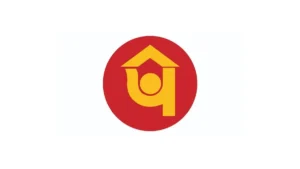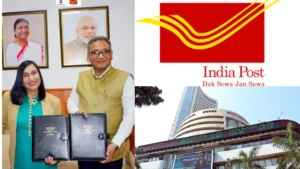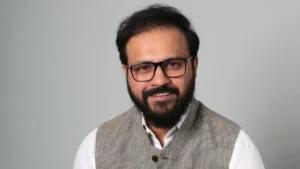Current Affairs 2025 – Daily, Weekly, Monthly updates are crucial for every competitive exam aspirant. Adda247 is a trusted platform that provides the Latest Current Affairs 2025 in an easy-to-read format, covering Current Affairs Today along with detailed Current Affairs 2025–26 compilations.
From Bank, SSC, UPSC, Railways, and Insurance exams, Adda247 ensures students stay updated with important national and international events. The platform offers daily current affairs, weekly summaries, and monthly PDF capsules, helping aspirants strengthen their general knowledge and score better in exams.
By regularly following Current Affairs 2025, aspirants can build strong exam readiness, improve accuracy in the GK section, and stay ahead with reliable, exam-focused updates tailored to government exam preparation.
Today’s Latest Current Affairs
- Which Indian City is Known as the Footwear City?December 13, 2025India has many cities that are famous for their unique industries, and some of them play a ...
- Which Desert is known as the Cold Desert?December 13, 2025Some deserts are extremely hot, but some remain cold throughout the year. These cold deserts receive very ...
- Top-10 News Media Companies in the World, Check the ListDecember 13, 2025In today’s world, news media plays a very important role in sharing information quickly and clearly with ...
- PNB Housing Finance Appoints Ajai Kumar Shukla as New MD & CEODecember 13, 2025PNB Housing Finance has announced the appointment of Ajai Kumar Shukla as its new Managing Director (MD) ...
- Department of Posts and BSE Sign MoU to Expand Mutual Fund Access Across IndiaDecember 13, 2025In a major push towards deepening financial inclusion, the Department of Posts (DoP) and BSE, Asia’s oldest ...
- Retail Inflation Rises Slightly to 0.71% in November 2025December 13, 2025India’s retail inflation, measured by the Consumer Price Index (CPI), increased modestly to 0.71% in November from ...
- India’s Foreign Reserves Touch $687.26 Billion In December 2025December 13, 2025India’s foreign exchange reserves saw a moderate rise in the week ending December 12, 2025, increasing by ...
- Cabinet Nod to Atomic Energy Bill Unlocks Opportunities for Private Nuclear ProjectsDecember 13, 2025The Union Cabinet has approved the Atomic Energy Bill, marking a major shift in India’s civil nuclear ...
- Meta India Appoints Aman Jain as Head of Public PolicyDecember 13, 2025Meta India has announced the appointment of Aman Jain as its new Head of Public Policy, marking ...
- Brookfield to Invest $1 Billion to Build Asia’s Largest GCC in MaharashtraDecember 13, 2025Brookfield Asset Management has announced a major investment of $1 billion to develop Asia’s largest Global Capability ...
General Studies
- Which Indian City is Known as the Footwear City? December 13, 2025
- Which Desert is known as the Cold Desert? December 13, 2025
- Top-10 News Media Companies in the World, Check the List December 13, 2025
- Which Tree is known as the Christmas Tree? December 13, 2025
- Year Ender 2025: Major Constitutional Amendments, Laws, Judgments & Appointments in India December 13, 2025
- Is Vatican City a Country or City? Explore the Answer December 13, 2025
Important Days 2025
- National Energy Conservation Day 2025: Meaning, Importance, and Observance in 2025 December 13, 2025
- International Day Against Colonialism in All Its Forms and Manifestations 2025 December 13, 2025
- World Inequality Report 2026: Key Findings, India Highlights & Global Trends December 12, 2025
- International Day of Neutrality (12 December): Importance, History & Key Facts December 12, 2025
- International Universal Health Coverage Day (12 December): Meaning, History & Why It Matters in 2025 December 12, 2025
- International Mountain Day 2025: Theme, Significance & Global Call to Protect Glaciers December 11, 2025
Latest Current Affairs 2025
Staying updated with the Latest Current Affairs 2025 from adda247 current affairs can significantly enhance your general awareness and give you a competitive edge in exams like IBPS PO, SBI PO & Clerk, UPSC IAS, SSC CGL & CHSL, RRB NTPC, Group D, and many others. Since Current Affairs 2025–26 form a crucial part of the General Awareness syllabus, thorough preparation is essential for success. With Adda247’s structured resources, your exam journey becomes more efficient, result-oriented, and confidence-driven.
For government exam aspirants, keeping up with Daily News Current Affairs Today is vital, as it directly impacts performance in highly competitive tests. The Current Affairs section evaluates candidates’ awareness of ongoing developments, making it a key element of the preparation strategy. Staying informed not only boosts your chances of securing a government job but also builds a strong foundation for long-term career growth.
Access Daily Current Affairs Updates for Exam Success
To access Daily Current Affairs Updates, candidates can visit the Current Affairs Adda website and explore dedicated sections for Daily, Weekly, and Monthly Current Affairs 2025. This ensures effective preparation strategies that help aspirants excel in Banking, SSC, Railways, UPSC, and Insurance exams.
With exams witnessing intense competition every year, the General Awareness (GA) section becomes decisive, especially in assessing knowledge of the Latest Current Affairs 2025–26. Regular updates, consistent revision, and focused practice on recent events can greatly improve your performance, ensuring better exam readiness and overall success.


















